Everything you need to know about email marketing, its benefits, and the key strategies and tactics you need to grow your DTC store
To answer that question, you’ll need to ask yourself this: What does it take to grow my DTC store?
From there, you can start listing down what you’ll need. And for every need, email marketing has you covered:

On average, email generates $36 for every $1 spent. But with the right strategies, you can have your emails generate up to $42 for every $1 you spend—that’s a whopping 4,200% ROI!
You can extensively customize your emails to the point where they start looking and feeling like an extension of your DTC store’s website. When you create a consistent branding strategy, you boost your brand’s recognizability among your customers.
The moment they see your brand logo and signature brand colors, they’ll immediately recognize who those promotional emails are from—making them more likely to respond to your messages as opposed to anonymous-looking emails from brands they may or may not have interacted with before.
Email excels when you send your messages to the right people. Gone are the days of the spray-and-pray method since modern-day consumers are much more critical of whether or not an email is relevant to them.
This is when segmentation comes into play. You can boost your conversions and lead quality by sending your customers content that’s connected to their interests.
The best part about email segmentation is that there are tools readily available for you to make it more accurate and data-driven down to the decimal for the best results.
Email can either be text-based or graphics-oriented. They can be animated or static, long or short—whatever your target audience prefers!
You can even set up messaging that can make your emails feel tailor-made for specific customers such as mentioning your customers by name, sharing promos that relate to their local areas, and even celebrating specific milestones such as subscription anniversaries or customer birthdays.
You can leverage email’s high personalization to best engage your customers, build their trust, and solidify their loyalty to your DTC brand.
Email marketing is already a great standalone tool with its versatility. However, You can further enhance all benefits it can offer you by integrating it with other direct marketing tools.
Email can work seamlessly with SMS and mobile push notification marketing, altogether creating the power triangle of lifecycle marketing.
As a profit driver, emails have the power to generate 30% of your DTC store’s overall revenue.
Email marketing is a science in itself. It’s all about smart email marketing, proper segmentation, thorough A/B testing, and many more—truly a marketing tool that’s easy to learn but difficult to master.
You can also use emails throughout the customer journey, addressing customer pain points no matter where they are in that journey.
Emails can help you capture new leads, nurture your existing customers, and even re-engage with customers you haven’t heard from in a long while.
Before sending out your emails, you’ll need to optimize how they look.
How Should my Emails Look?
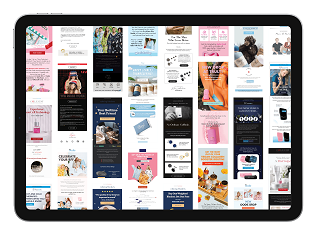

Who Should I Send my Emails to?
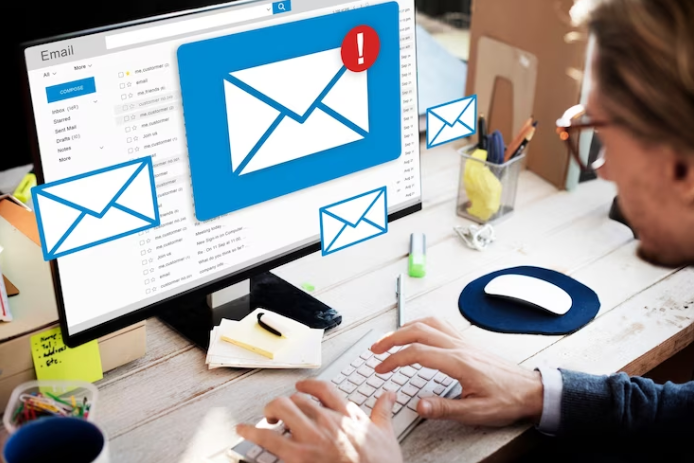
Imagine receiving an email with a discount code for a selection of feminine perfumes. Or an email asking you to fill in some personal information so you can get a discount code for a leather jacket.
Heck, how about an email telling you to visit a specific local store right now to avail a free giveaway?
All that would be nice, right? If only you actually were someone who just happens to be looking for feminine fragrances. If only you were already someone familiar with a brand enough to share your personal information.
And if only you were living at the actual location where that local store was giving away free stuff!
You’ll then mark these emails as spam and maybe even block the sender altogether. THAT’S what happens when senders don’t practice email marketing segmentation.
Your goal is to reach out to your target audience and generate high-quality leads. To accomplish that, you’ll need to send your emails according to a list of specific criteria.
With these criteria in mind, you can segment your subscriber lists accordingly. You’ll know who to send specific emails to.
The bottom line is that segmentation can help you send the right emails to the right people. Doing so can help you minimize unsubscription and maximize engagement.
Now that you can engage your customers with pinpoint accuracy, what kinds of emails exactly should you be sending them?
What Kinds of Emails Should I be Sending?

You can generally categorize emails into types: campaigns and flows. The difference between the two is in their execution and purpose.
Your main objective when sending campaigns is to touch base and establish communication with your subscribers.
Flows, on the other hand, are a series of emails set to automatically send when your customers meet specified conditions and triggers.
Your main objective when using flows is to keep your customers engaged throughout their buyer’s journey.
Let’s start with email campaigns, What campaigns you send depends on the objective you’re looking to achieve.
Are you trying to drive traffic into your DTC store page? Nurture leads? Raise brand and product awareness? Or are you just looking to generate more revenue?
Let’s take a closer look at content emails. They don’t directly drive sales, but they do enhance them—and content emails accomplish this in two ways:
There are consumers who aren’t in the mindset of straight-up buying something the moment they land on your store page. To convert your visitors into buyers, you can send frequent visitors content emails as a gentle push to finally get them to make the purchase.
On the other hand, you can have customers who’ve already made the purchase but are having second thoughts (buyer’s remorse). Sending them content emails that highlight the benefits of your products and how they can improve your customers’ quality of life.
Content emails also work for regular customers. Engage your customer base by sending them tips on product usage and maintenance. This way, you can even squeeze in some cross-selling opportunities.
However, when it comes to meeting your customers at every step of the way in their buyer’s journey, sending an email campaign just won’t cut it.
You’ll need the magic of email marketing automation by your side. In other words, it’s time for flows.

This flow triggers when a prospect signs up as a new subscriber to your email. Much like gifting some cookies or cake to a new neighbor, you are acknowledging your new subscribers—making them feel welcome to your brand.
Your engagement with your customers shouldn’t stop after they’ve made a purchase. The post-purchase journey is a critical time to make or break customer satisfaction.
Your aim for using post-purchase flows is to confirm your customers’ purchases, reassure them they made the right choice, and collect feedback.
According to the Baymard Institute, shoppers abandon 69.57% of online shopping carts. That’s a huge chunk of your revenue just sitting on the table.
Cart recovery flows help you claim finally that dormant revenue. Usually, cart recovery emails would be simple text-based reminder emails. In most cases, customers would just need a simple reminder to finally finish their checkout.
If that’s not enough, you can follow up with another reminder email but this time with a modest discount code as an incentive.
This flow triggers when a visitor to your website provides you with their email but didn’t make a purchase.
Remind your customers of their interest in your products to lure them back to your store. This way, you can monetize incoming traffic.
Think of this flow as a more fleshed-out version of your basic Welcome Series. More than just welcoming your new subscribers, you’re also sharing information about your brand, what you sell, and why.
Through that series of emails, you can make discount offers for their first purchase—incentivizing your new customers to buy from you.
If done right, you can even squeeze in an upsell opportunity at the near end of the flow.
Tip: Squeeze in some educational content emails in your post-purchase flows to eliminate buyer’s remorse. It can be content about your product background like how it’s made and how it can benefit your customers.
Now you’ve got the ammunition for your email marketing system, you’ll need the guns to fire them away.
How Can I Send my Emails Out There?

There are a bunch of tools out there that do the job, but only a handful of them are fit to be in your toolbox.
Here are our top recommendations:
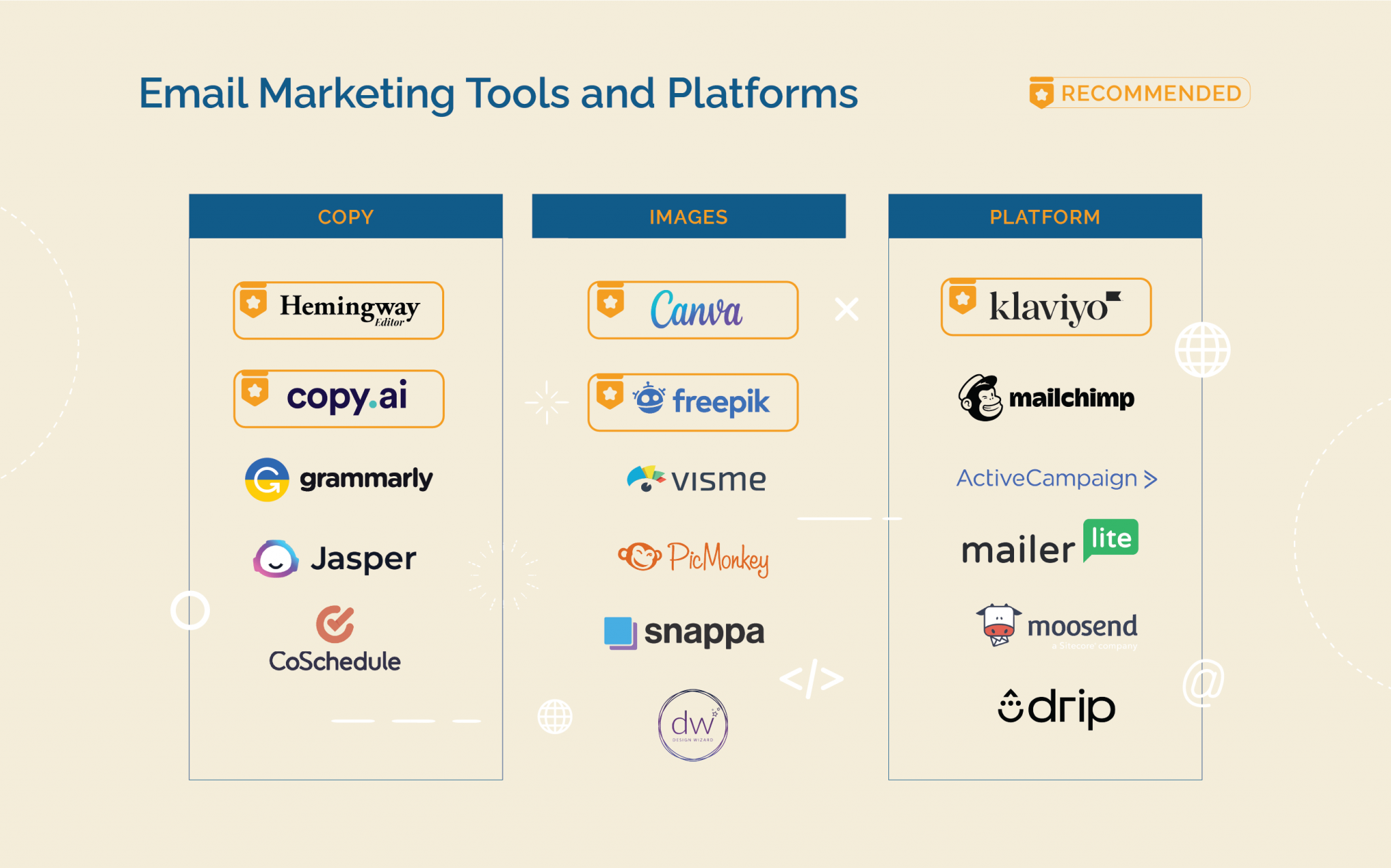
What Should I Keep Track of to Know it’s Successful?

For you to get the best results out of your email marketing, you’ll need to keep track of the relevant metrics.
Data-driven decision-making is key to optimizing your email marketing for maximized revenue generation and customer retention.

These are the base metrics you’ll need to track. However, there have been instances where tracking open rates has been deemed unreliable.
This is especially true when dealing with services that give consumers more control over the information they share when making online transactions.
We’re talking about the iOS 15 update rollout in late September 2021. Collecting emails became much more challenging, especially for DTC store owners whose customer base was mostly made of Apple users.
But don’t fret, as workaround strategies have long since been made to circumvent this obstacle. Our CEO, Josh Chin, put out a short video discussing this topic:
Okay but what DO you do with all this data? How should you plan your next move based on your results?
A/B testing is your best friend when it comes to processing numbers into strategies. Make two versions of one of your emails. Here’s a basic A/B testing scenario:
Let’s say Email A has a hero image, and Email B doesn’t.
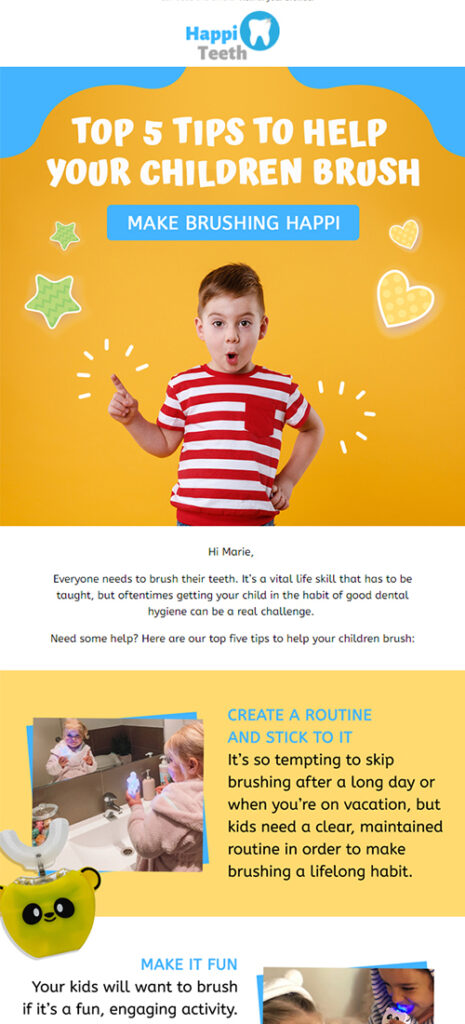
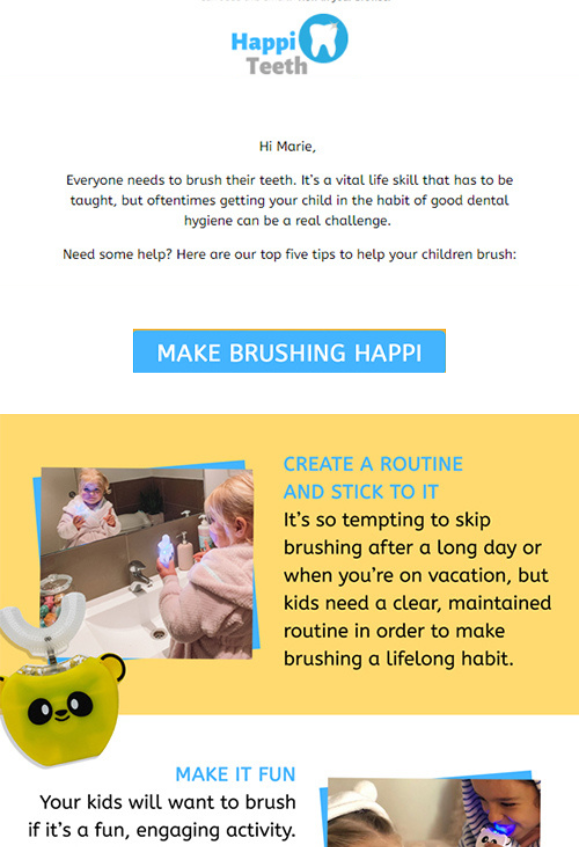
Send them out and observe each of their performances based on the metrics we’ve listed above.
If Email A produces better results than Email B, then that tells you that your customers are more receptive to emails with hero images.
But hold your horses! That doesn’t mean all your future emails should follow that conclusion. Depending on the type of email you send out, your customers’ preferences may vary.
This is why you should conduct A/B testing regularly. To create the best version of your emails, rigorous and consistent A/B testing is crucial.
With that, you’ve got the basics of email marketing. But why stop there?
Basic email strategies can only get you so far. That’s why we’ve compiled a couple of advanced tips and strategies you can use to take your email marketing even further.
You can optimize your emails further by zeroing in on these 3 things.

Your emails can’t generate sales if they don’t land in your customers’ inboxes in the first place.
To optimize your deliverability, make sure you send relevant content to your high-quality customers. Also, follow the spam filter criteria set by email service providers and internet service providers.
As emails have the power to generate 30% of your DTC store’s revenue, 15% to 20% of that should come from automated emails.
To maximize your automated email revenue, focus on your heavy-lifting flows. These would be your Cart Recovery, New Customer Acquisition, and Customer Nurture Flows.
Bigger isn’t always better. An email list of 100,000 subscribers will do you more harm if a huge chunk of them are inactive and not really interested in what you have to offer.
Prune your email lists to keep them healthy. It’ll save you money and keep your analytics clean and reliable.
We’ve covered the basic segments, but to really scale your DTC brand to the next level, you’ll need to have these advanced segments in place:
We know, email is not perfect. While it can do a lot alone, it can accomplish a lot more when paired with other digital marketing tools.
SMS and mobile push notification marketing are excellent partners to your email marketing. All together, they make up an effective direct marketing combo.
The combination of each tool’s specialties can boost your lifecycle marketing—improving customer retention and satisfaction with a more customer-centric approach.
Email marketing is a goal-oriented marketing tool. To get the results you need, you’ll need to establish goals you can align your emails to.
Successful email strategies require data-driven strategies. Listen to your numbers and optimize your emails accordingly.
There’s no “one size fits all” strategy in email marketing. Since your dealing with consumers, their interests and preferences will always change. Also, different DTC stores have different needs. So keep A/B testing!
Sales emails drive the sales, but content emails help drive the sales harder. Squeeze in content emails between your promotional emails to make your product highlights more enticing to your customers.
A happy customer base begets a sustainable DTC brand. It goes without saying that customers are the lifeblood of DTC stores. Going for a customer-centric approach in your email marketing is key to sustainable brand growth.